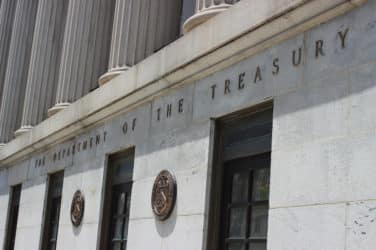
Consultancy McKinsey said there is great promise in distributed ledger technology but expects that development will require cooperation among market participants, regulators and technologists.
Distributed ledger, or blockchain, technology allows copies of a ledger to be distributed and validated by multiple users who verify changes. This allows transfers and payments directly between members of the network without using intermediaries which cuts settlement times, as well as reducing credit and liquidity risk.
In a report, “Beyond the Hype: Blockchains in Capital Markets”, McKinsey said simultaneous, large-scale adoption is unlikely so blockchains will initially be confined to subsets of financial market participants and specific use cases. “However, the potential for rapid uptake once open questions are resolved means all market participants must be aware of the potential benefits and threats and develop a response plan,” added the report.
The report said blockchain technology is likely to deliver a range of benefits across the capital markets value chain, from clearing houses and exchanges to prime brokers and banks. However McKinsey also warned that the technology is still largely unproven in complex markets. Other challenges in developing applications include not being able to amend blockchain transactions after the fact, the digitization of assets, asset disposition, position netting and computing power.
“Banks will also face challenges related to market, legal and operational protocols, issues concerning adoption and route to market, and interoperability, as well as internal hurdles related to expense pressures, technology architecture design and cultural resistance,” added McKinsey.
As a result the consultancy expects there will be four stages of gradual development for blockchain – single-enterprise adoption across legal entities; adoption by a small subset of banks as an upgrade to manual processes; conversion of inter-dealer settlements; and, finally, large-scale adoption across buyers and sellers in public markets.
The report said there is potential for central banks to simplify and de-risk the wholesale deposit and payments processes by facilitating digital settlement for banks. The Bank of England is conducting research on central bank–issued digital currencies. In September Andrew Haldane, chief economist at the Bank of England and executive director, monetary analysis and statistics, said in a speech that it may be possible for government-backed currency to be issued in an electronic rather than paper form.
In July SETL, the UK blockchain institutional payment and settlement infrastructure, announced plans to launch a multi-asset, multi-currency institutional payment and settlements infrastructure in central bank money which can by used for any platform, exchange, currency and asset.
Today SETL said in a statement that it had appointed Sir David Walker as chairman. He is a former executive director of the Bank of England and was also a past chairman of Barclays, Morgan Stanley International and the Securities and Investment Board.
Walker said in a statement: “Blockchain is an important advance in settlement technology and SETL has a compelling proposition for its deployment. By simplifying the process of payments and settlement SETL should be able to deliver significant operational efficiencies which will benefit all market participants and, most importantly, reduce costs borne by savers and investors.”
SETL also announced that its fundraising efforts will be managed by Caroline Silver at Moelis & Company, the independent investment bank. Silver has advised on large exchange transactions such as the $2.2bn sale of London Metal Exchange and the $8.2bn sale of NYSE Euronext
In addition SETL said Professor Philip Bond, visiting professor in the departments of engineering mathematics and computer science at Bristol University, will be head of the cryptography and cyber security committee.
Featured image via Natalia Merzlyakova/Dollar Photo Club






